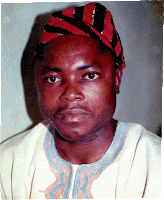By Dr Ochinya Odaba Ojiji
The second burial rite in Akweya/Akpa culture is a traditional religious and cultural obligation that has profound social and economic significance.Before the advent of colonialism and/ or Christianity, the Akpa people practised traditional African religion, the core of which is the belief in a cycle of interconnectedness of the spirits of dead ancestors with the living members of a community.
In other words, life and activities of living members of a community are
believed to be influenced and shaped by the spirits of dead ancestors through a link which is established at birth and runs through the entire life time of an individual. The clearest expression of this link between spirits of dead ancestors and the living members of a community is reincarnation.
Reincarnation is the belief that a dead person comes back to life in another form when the person begins life afresh as a newborn baby. It is believed that the newborn inherits some of the attributes of the person who reincarnated the baby. Evidence to support claims that a person has reincarnated a baby is sought soon after birth, sometimes by physical examination of parts of the baby or through a diviner. Usually a close relative who died about the time of birth of a baby is said to reincarnate a child. It is unlikely that someone not related to you by blood or friendship would reincarnate your child. Secondly, it is only an adult of marriageable age that can reincarnate a child when such a person dies.
Although Akpa people believe in a supreme God called Akpakpnmochi, there are a myriad of gods which in principle mediate between the people and the supreme God. These smaller gods are apparently more active in influencing the daily life of the people. It is however the community of spirits of dead ancestors in a community that is most important for the people for the spirits are real and resident in the community and therefore are believed to have knowledge of goings on in the community. In this way, the spirits superintend over the entire life of the people. This community of spirit of ancestors is made of spirit of dead adult members of the community who have made a successful transition from the world of the living after death to the eternal world of spirit of ancestors. A successful transition here is defined as living family members performing the second burial rites of a dead adult.
Accordingly, the second burial is considered a very important obligation for the family of a departed adult relative. Without performing these rites, the spirit of a dead adult person would not be admitted into the next world and will only reside in a place equivalent to purgatory in Catholicism. The second burial then marks a formal end of the cycle of reincarnation as the dead person is permanently transformed into a spirit never to come back to life in another form.
The first burial is the physical act of disposing of the body of a dead person while the second burial consists of a series of rituals and activities aimed at achieving the permanent and final transition of the spirit of a dead person into the spiritual realm of life. The idea here is that there is life after death which is inhabited by spirits of dead adult people.
 |
| Dr Ochinya Odaba Ojiji |
An important element of the Akpa people’s explanation of life is that a person is made up of body and spirit. The spirit is superior in this dualism as it is believed to energize and give life to the body which ceases when the spirit departs the body at death. When the spirit is separated from the body, two things can happen to it: The spirit can inhabit a new body and start life afresh (as in reincarnation) or be integrated into the community of spirit of ancestors.
But the departed spirit has to be properly integrated into the spiritual realm of life in order to ensure harmony and overall well being of living members of the family of a departed person. The second burial is therefore a procedure of ensuring the proper integration of the spirit into the next world.
As part of this proper integration of spirits, both the first and second burials are done in a person’s ancestral home. By ancestral home we mean a community which a person can make autochthonous claim of ownership. In other words, it is a community a person is indigenous to in the sense that his or her ancestors are believed to be the first inhabitants of the land and in that sense own the community. Where the physical body is not available for the first burial in the ancestral home, a symbolic burial of the body (usually clothes worn by the person when he or she was a life) known as Afanya is done. The Afanya simply implies that the spirit has been taken to the ancestral home and that all the activities that need to be performed to achieve the transition of the spirit can be performed. This is the reason why the Akpa people do not accept that one of their own should be buried outside their fatherland even if such a person is married to people from other cultures.
To be continued on Tuesday

No comments:
Post a Comment
As you comment on Akweya.com, please, include your name.